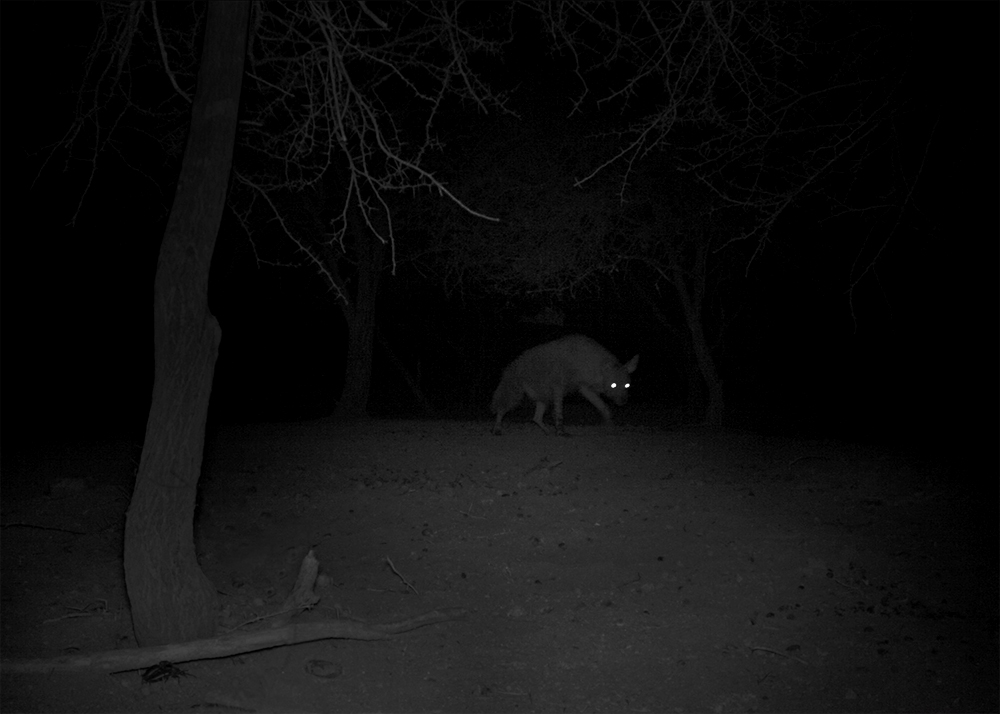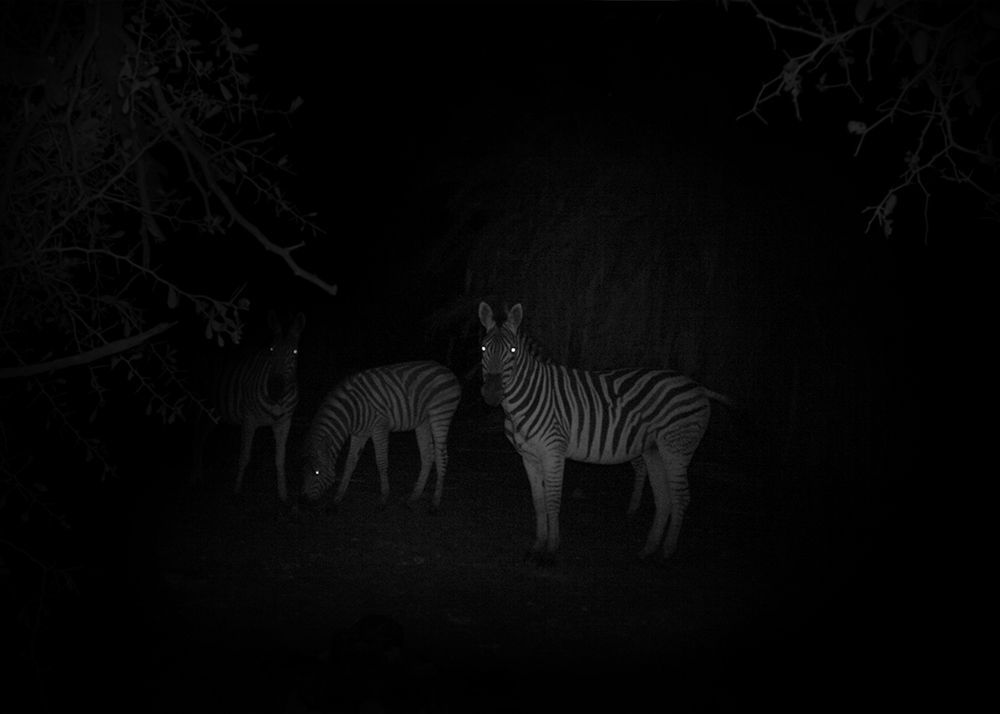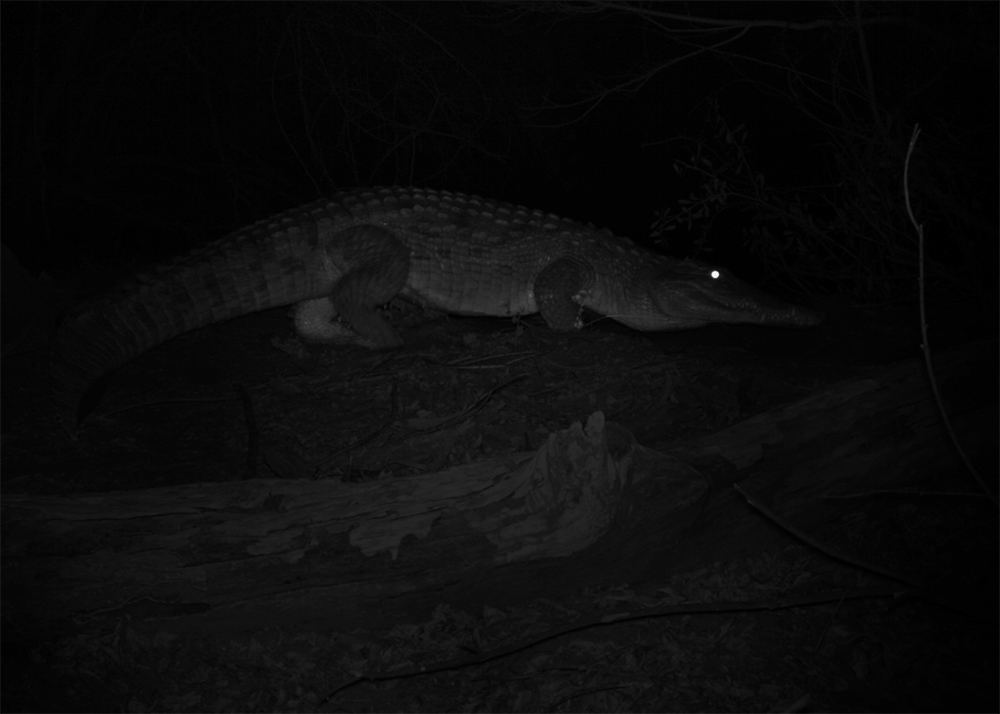Infrared photographs, UV print on 4mm glass
Glass size 29 x 26.42″ (without frame) / Image size 9 x 6.42″
edition of 3 +1 AP
This photographic work entitled Aura takes on a body of work created after the notion of the Wunderkammer that questions established archaeological, museum, and scientific methods and practices in contemporary society. Shoot in South Africa during a residency, these photographs have been captured with an infrared camera trap, a mechanical device for automatic imagery commonly used for surveillance and depicting portraits of animals at night. These encounters are points of entry into the animal gaze away from the usual anthropocentrism. The title of this photographic series takes its title from the notion of aura defined by Walter Benjamin as “a strange weave of space and time: the unique appearance or semblance of a distance, however near it may be”1; and in his later writing he notes: the “experience of the aura . . . arises from the transposition of a response characteristic of human society to the relationship of the inanimate or nature with human beings. The person we look at, or who feels he is being looked at, looks at us in turn. To experience the aura of a phenomenon we look at means to invest it with the ability to look back at us,” or to lift its gaze.
With such an apparatus, the photographer’s presence is no longer required, as these events could not be recorded in a similar way with his presence and the photographs create thus the only traces for the possibility of breathing the aura of their subjects. There is no gaze that is not calling for a return from the one gazed at would argue Benjamin. The camera records the animals as they pass by, yet as they often notice an unusual presence, the observed observes, and in a reverse turn of things, look back at us, and seem to question our own animality.
1 Walter Benjamin Little History of Photography, 1931





